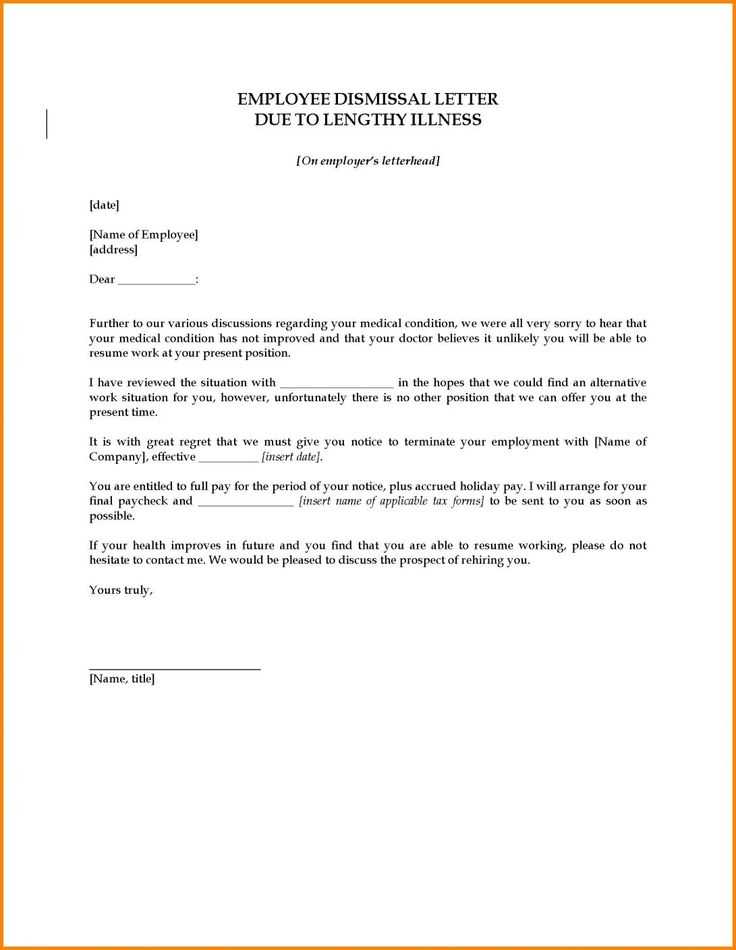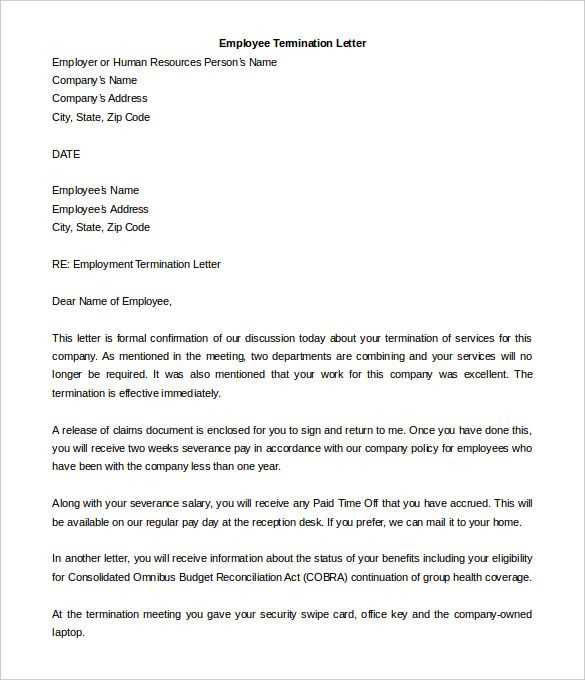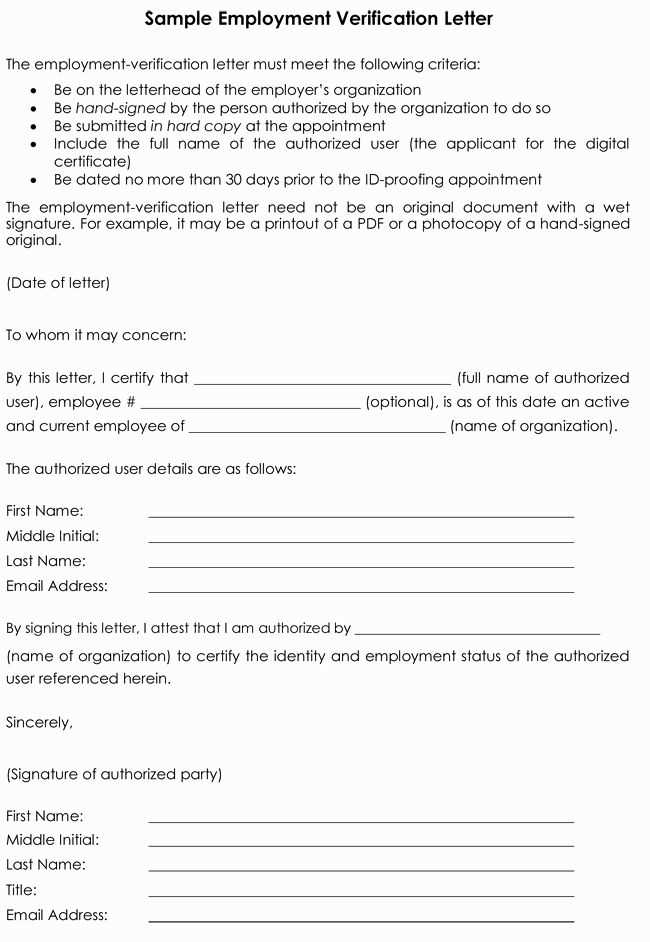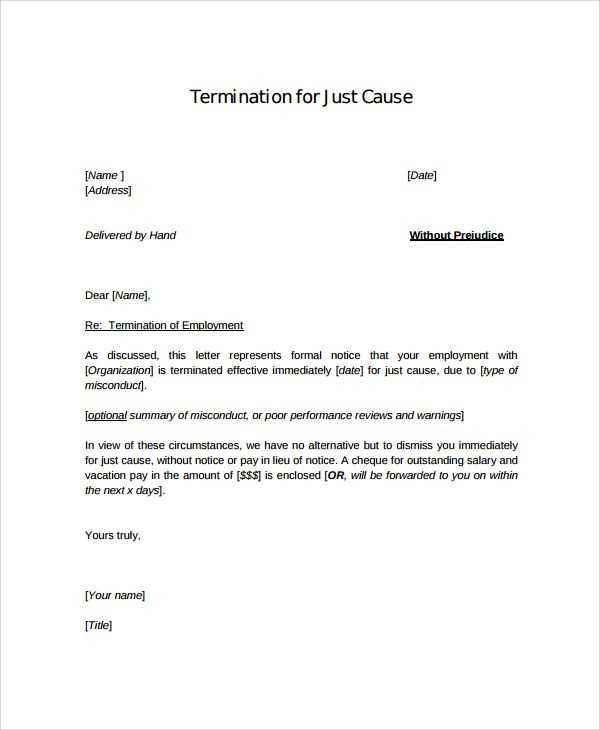Employment Notice Letter Template for Professional Use

When an employee is leaving or transitioning within an organization, it is essential to communicate the decision clearly and professionally. Providing a formal document for such occasions ensures that all parties involved understand the terms and the next steps. This communication is crucial for maintaining a positive relationship and clear expectations between the company and its staff members.
Important Elements to Include

Each document related to job transitions should contain several key components to ensure clarity and professionalism. These elements may include:
- Employee details – Full name, position, and department.
- Reason for the change – Whether it is due to resignation, internal transfer, or other reasons.
- Effective date – The start or end date of the change.
- Required actions – Any necessary steps, such as returning company property or completing final tasks.
- Contact information – Details for future communication if needed.
Personalizing the Communication
Tailoring the document to fit the specific circumstances can help ensure it serves its purpose. Personalization may include mentioning the employee’s contributions, offering well wishes for the future, or providing any additional details relevant to their transition.
Avoiding Common Mistakes
Inadequate or vague communication can lead to misunderstandings or missed steps. Be sure to avoid the following:
- Not clearly stating the effective date of the transition.
- Leaving out essential details like instructions for returning company property.
- Using informal language or a tone that does not align with professional standards.
Legal and Company Considerations
It is important to be aware of any legal obligations related to the process. Certain regulations or company policies might dictate the content or format of such documents, especially in situations involving contract terms, severance, or non-compete clauses. Always ensure compliance with relevant laws to avoid potential issues down the line.
Guide to Professional Communication for Job Transitions
Effective communication during job changes is essential for ensuring smooth transitions. Whether an employee is leaving, transferring, or moving to a new role, the right approach in conveying this message can make all the difference. A well-crafted document helps set clear expectations, provides transparency, and maintains positive relationships between employers and staff members.
Key Components to Include
Every professional document addressing job changes should cover several crucial points to ensure it is clear and complete:
- Employee Information – Clearly state the individual’s name, position, and department.
- Reason for the Change – Specify if the move is voluntary or part of an organizational change.
- Transition Date – Outline the effective date when the change will take place.
- Action Required – Mention any actions the employee or employer must take before the change occurs.
- Contact Information – Include details for ongoing communication if necessary.
How to Personalize the Document
Personalization is key to making the communication feel genuine and relevant. Tailor the content to reflect the specific situation, mentioning the employee’s contributions, expressing gratitude, or offering support for future endeavors. Personalizing the document can also help set a positive tone and encourage continued goodwill.
Common Errors to Avoid

There are several common pitfalls to watch out for when drafting this type of correspondence:
- Vagueness – Ensure the document clearly specifies the effective date and any actions required.
- Inadequate Detail – Always include essential information such as reasons for the transition and necessary steps.
- Informality – Maintain a professional tone to reflect the seriousness of the situation.
Best Practices for Crafting the Document
When creating the communication, aim for clarity and professionalism. Ensure the content is concise, direct, and free of unnecessary jargon. Use respectful language and aim to maintain a positive tone throughout the document. A well-structured message will help minimize confusion and maintain a productive relationship with the employee.
When to Dispatch the Communication
Timing is important. The communication should be sent promptly once the decision has been made to ensure there is enough time for the individual to prepare and make any necessary arrangements. Sending it too late could cause unnecessary stress or confusion.
Legal Considerations

Make sure the communication complies with any applicable legal regulations or company policies. In some cases, there may be contractual obligations or legal requirements related to such transitions, especially in the case of resignations, terminations, or transfers. It is essential to review relevant guidelines to avoid potential legal issues.